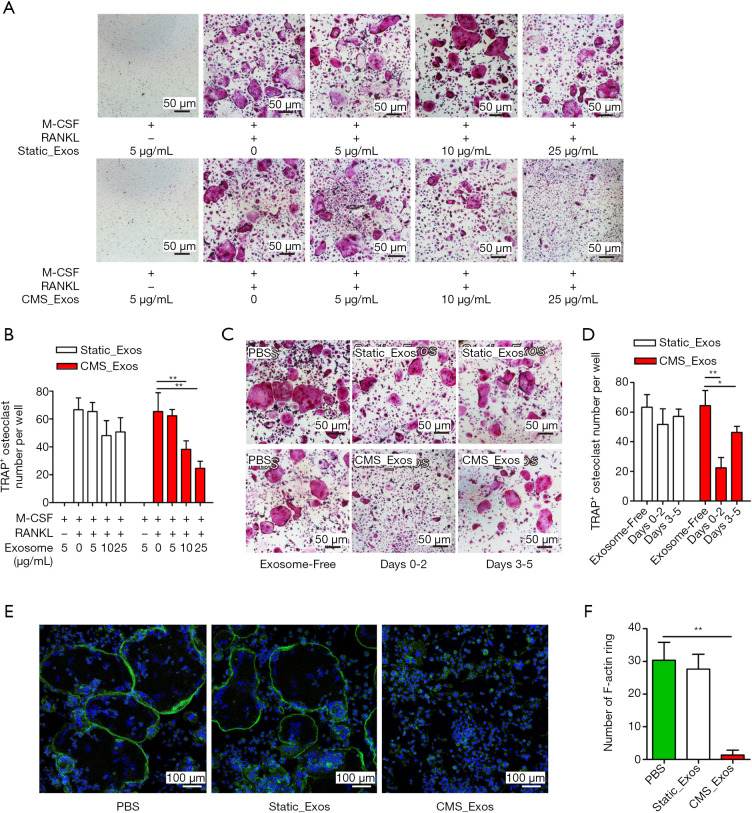Figure 2.
CMS_Exos inhibit RANKL-induced osteoclastogenesis and actin ring formation. (A) Representative images of RANKL-stimulated BMMs stained for TRAP (red) after treatment with the indicated exosomes at different concentrations (0, 5, 10, or 25 µg/mL). (B) The number of TRAP-positive multinucleated osteoclasts (≥3 nuclei) was quantified. (C) Effect of the time of indicated exosome addition on osteoclast formation. BMM cells were stimulated with RANKL (50 ng/mL) alone or cotreated with the indicated exosomes (25 µg/mL) at different stages during a 5-day osteoclast culture. The cells were fixed and stained for TRAP activity. (D) The number of TRAP-positive multinucleated osteoclasts (≥3 nuclei) was quantified. (E) BMMs were stimulated with RANKL and the indicated exosomes until mature osteoclasts formed. Then, the cells were fixed and stained for F-actin. The actin ring distribution was visualized by confocal microscopy. (F) The number of osteoclasts with an intact actin ring was counted. All experiments were performed at least 3 times, and representative images are shown. Data are expressed as the mean ± SD; *P<0.05, **P<0.01. CMS_Exos, CMS-treated BMSC-derived exosomes; RANKL, receptor activator of nuclear factor kappa-B ligand; BMM, bone marrow macrophage; TRAP, tartrate-resistant acid phosphatase; SD, standard deviation.

